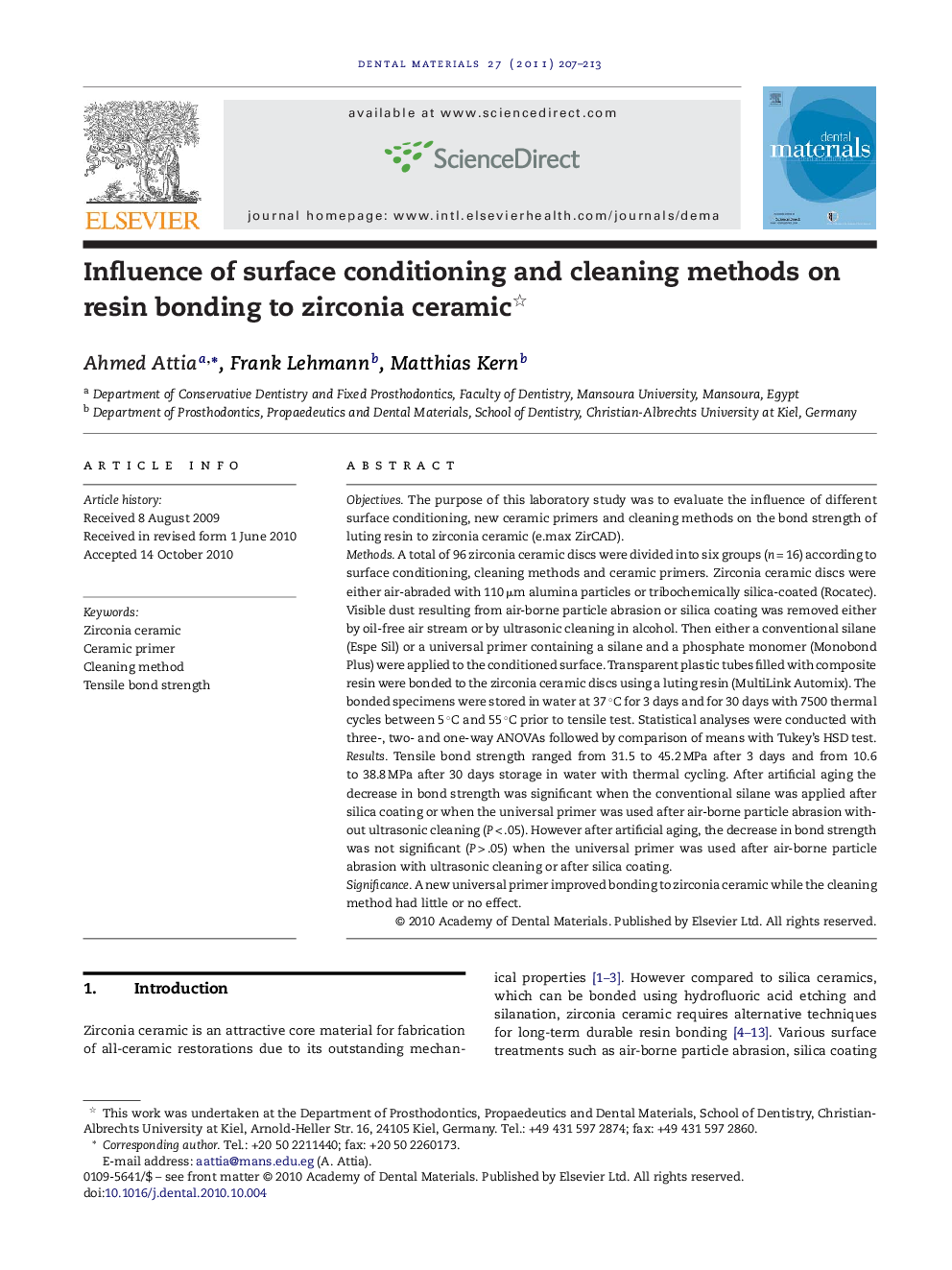| Article ID | Journal | Published Year | Pages | File Type |
|---|---|---|---|---|
| 1421900 | Dental Materials | 2011 | 7 Pages |
ObjectivesThe purpose of this laboratory study was to evaluate the influence of different surface conditioning, new ceramic primers and cleaning methods on the bond strength of luting resin to zirconia ceramic (e.max ZirCAD).MethodsA total of 96 zirconia ceramic discs were divided into six groups (n = 16) according to surface conditioning, cleaning methods and ceramic primers. Zirconia ceramic discs were either air-abraded with 110 μm alumina particles or tribochemically silica-coated (Rocatec). Visible dust resulting from air-borne particle abrasion or silica coating was removed either by oil-free air stream or by ultrasonic cleaning in alcohol. Then either a conventional silane (Espe Sil) or a universal primer containing a silane and a phosphate monomer (Monobond Plus) were applied to the conditioned surface. Transparent plastic tubes filled with composite resin were bonded to the zirconia ceramic discs using a luting resin (MultiLink Automix). The bonded specimens were stored in water at 37 °C for 3 days and for 30 days with 7500 thermal cycles between 5 °C and 55 °C prior to tensile test. Statistical analyses were conducted with three-, two- and one-way ANOVAs followed by comparison of means with Tukey's HSD test.ResultsTensile bond strength ranged from 31.5 to 45.2 MPa after 3 days and from 10.6 to 38.8 MPa after 30 days storage in water with thermal cycling. After artificial aging the decrease in bond strength was significant when the conventional silane was applied after silica coating or when the universal primer was used after air-borne particle abrasion without ultrasonic cleaning (P < .05). However after artificial aging, the decrease in bond strength was not significant (P > .05) when the universal primer was used after air-borne particle abrasion with ultrasonic cleaning or after silica coating.SignificanceA new universal primer improved bonding to zirconia ceramic while the cleaning method had little or no effect.
